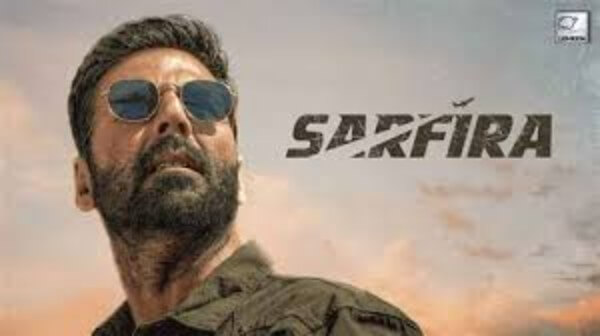Samina revisits three films of Guru Dutt, Kagaz ke Phool, Sahab Bibi Aur Gulam and Pyaasa. She tells us about the creative genius of the great filmmaker and his judicious use of light, along with haunting music, add to the narratives of his films. These accentuated the depth, magic, mystery and enigma of to his kind of storytelling. Here’s an analysis, in the weekly column, exclusively in Different Truths.
The depth of emotions resonating from the expressions touch your heart and reach out in this beautiful yet powerful scene from Kagaz ke Phool
Waqt ne kiya kya haseen sitam,
Tum rahe na tum, hum rahen na hum,
Bekarar dil kuch is tarah mile…
While this song plays in the background, the close proximity of the actors is electrifying and the use of light accentuates the actors’ feelings.
In another scene from Kagaz ke Phool, when the director opens the door of the studio and a lonesome  figure enters with the light beaming into the dark studio with him. His silhouette against the light conveys much more than words could ever say. The light falls on the actress sitting on a chair. Later, she walks up to him to light the cigarettes, we see that there is darkness all around and the frame has just the two forms that matter, while everything around is meaningless. And later, we see the two of them sitting and the studio lights capture their togetherness, a relationship showcased sensitively on a more humane plane with the magical camerawork using light and shadow. The camerawork becomes even more mysterious, sensitive and meaningful, adding depth to the song that follows.
figure enters with the light beaming into the dark studio with him. His silhouette against the light conveys much more than words could ever say. The light falls on the actress sitting on a chair. Later, she walks up to him to light the cigarettes, we see that there is darkness all around and the frame has just the two forms that matter, while everything around is meaningless. And later, we see the two of them sitting and the studio lights capture their togetherness, a relationship showcased sensitively on a more humane plane with the magical camerawork using light and shadow. The camerawork becomes even more mysterious, sensitive and meaningful, adding depth to the song that follows.
In films, where songs were an important part of the narrative, there too camera and light had conveyed the depth and shallowness of the character of the protagonist or that of the villain.
In the genre of black and white cinema, Guru Dutt seems to have played with it the most in adding to the  mood and depth. In Sahab Bibi Aur Gulam, the enigmatic beauty of Chhoti Bahu, her sensuality, and sexuality is enhanced not just by her dialogues and music playing in the background but also through the effect of light where one sees her half obscure image. A certain element of mystery and mystic, with her yearning and longing for her husband, the pain of neglect and humiliation, yet the determination to lure him, add layers to her character and gets beautifully portrayed by highlighting her moods and expressions through the effect of various shades from black to white.
mood and depth. In Sahab Bibi Aur Gulam, the enigmatic beauty of Chhoti Bahu, her sensuality, and sexuality is enhanced not just by her dialogues and music playing in the background but also through the effect of light where one sees her half obscure image. A certain element of mystery and mystic, with her yearning and longing for her husband, the pain of neglect and humiliation, yet the determination to lure him, add layers to her character and gets beautifully portrayed by highlighting her moods and expressions through the effect of various shades from black to white.
Guru Dutt’s expressions of pain, yearning, desire and humour as a protagonist in many of his films are also beautifully conveyed by the light falling on one side of his face and at times also his coquettish yet crooked smile is highlighted to add to his sex appeal to charm his beautiful paramour or beloved.
He was a man, who understood the complexities of human nature and his films resonate with an enduring intensity of feeling. The wide-eyed gawky Gulam’s expression, when he sees the Chhoti Bahu for the first time and is awestruck gets beautiful conveyed by his expression gets highlighted through close-ups and light.
 Another powerful scene, which haunts me is from Pyaasa where the poet stands in the doorway with his hands stretched out on either side, as if on a crucifixion, nailed brutally by a fake society, when one cannot see his face, which metaphorically conveys the death of the artist and the lost glory of an acclaimed poet is hogged by others. Guru Dutt’s use of light to convey mystery and emotion has been talked about by his admirers and critics. Pyaasa is a cult film, as it came to be recognised later. It was the epitome of perfection in all respects with a brilliant merging of the theme with the music, camerawork and acting by all, in the making of this masterpiece.
Another powerful scene, which haunts me is from Pyaasa where the poet stands in the doorway with his hands stretched out on either side, as if on a crucifixion, nailed brutally by a fake society, when one cannot see his face, which metaphorically conveys the death of the artist and the lost glory of an acclaimed poet is hogged by others. Guru Dutt’s use of light to convey mystery and emotion has been talked about by his admirers and critics. Pyaasa is a cult film, as it came to be recognised later. It was the epitome of perfection in all respects with a brilliant merging of the theme with the music, camerawork and acting by all, in the making of this masterpiece.
One sees the starkest, breath-taking images of the contrasting black and white, be it the picturisation of the song, Jane woh kaise log thhey jinke pyaar ko pyaar mila, or the haunting Yeh mahalon yeh takhton yeh tajon ki duniya.
One may go on writing about many more scenes. This is just an insight into his style, which added so much romance, intensity, charm, and pathos to his films. Happy viewing!
©Samina Naqvi
Photos from the internet.
#GuruDutt #Movies #Bollywood #GuruDuttMovies #MoviesOfGuruDutt #LightsAndSound #Cinemascope #DifferentTruths





 By
By
 By
By

 By
By